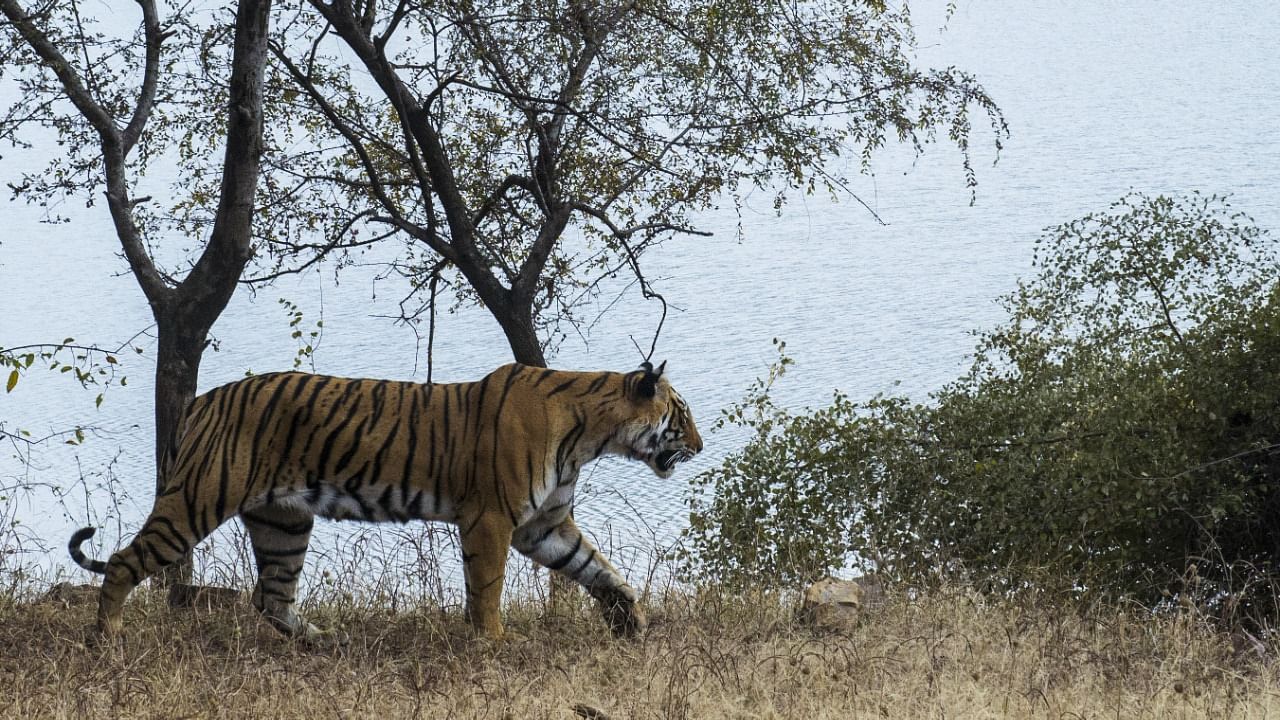
The tiger population in small isolated forests like Ranthambore carry a risk of getting wiped out due to inbreeding practices unlike other inter-connected landscapes in central India and Western Ghats, biologists in Bengaluru reported on Wednesday, along with a suggestion to introduce tigers from other parks to Ranthambore in order to save the 50-odd tigers at the tiger reserve.
Such a rescue strategy, however, needs to be evaluated against other ground-level issues before a decision is taken on translocating tigers.
According to the National Tiger Conservation Authority, Ranthambore is the only source population of the big cats in the Ranthambhore-Mukundara-Kuno-Shivpuri-Madhav landscape, marked by fragmented forest patches, Chambal ravines, river streams and agriculture lands.
"Tigers in Ranthambore are twice inbred as compared to tigers elsewhere. The inbreeding leads to a decrease in fitness. But for the first time, we also saw the signs of purging or clearing out of bad genes in the same tiger population,” wildlife biologist Uma Ramakrishnan at National Centre for Biological Sciences, who leads the team, told DH.
Studying 57 wild Royal Bengal tigers from three different landscapes, scientists at the NCBS and their colleagues spotted genetic signatures of “purging” and “inbreeding depression” in the Rajasthan park, representing the pros and cons of tiger mating among the relatives. “The entire Ranthambhore population came from just a few tigers,” she said.
In small, isolated populations, like those of endangered species, individuals often mate with relatives. Such inbred populations will be having harmful genes circulating among themselves, decreasing their fitness, or the survival and reproduction of such inbred individuals.
This is called inbreeding depression, and can threaten the survival of these populations. Often called the small population paradigm in conservation biology, such small and isolated populations require monitoring and management. But an alternate hypothesis suggests that in such small and isolated populations, inbreeding can also result in the purging, or clearing out of bad or deleterious genes. Purging can allow these small and isolated populations to persist for a very long time.
The NCBS study, published in the Proceedings of the National Academy of Sciences, showed that despite the removal of some of the deleterious genes through purging, the remaining such genes occur at high frequencies in small and isolated populations in an endangered species like Indian tigers.
“The risk of getting wiped out continues despite the purging, requiring close monitoring of such population,” Ramakrishnan said, adding that Ranthambore tigers were compared with the big cats from Kanha-Pench and Bandipur-Nagarhole-Madhumalai ranges, both of which are inter-connected forests and allow tiger migration from one forest to another. In comparison, Ranthambore is like an island.
“After several years of sampling and big data analyses, it was fascinating to observe that endangered populations are under threat of inbreeding depression despite purging. This opens up a whole avenue of questions regarding the persistence of small and isolated populations” noted Anubhab Khan, first and corresponding author, NCBS, about the findings of the team.
What does the future of Ranthambore hold? How could the bad effects of inbreeding depression be avoided? Scientists have suggested genetic rescue, or bringing individuals from another, unrelated source population. “With small protected areas and low functional connectivity, genetic rescue will have to be considered in future tiger management. Better understanding of rescue strategies will help plan science-based management for the future,” said Arindam Tomar, Chief Wildlife Warden, Rajasthan.
Watch the latest DH Videos here:
